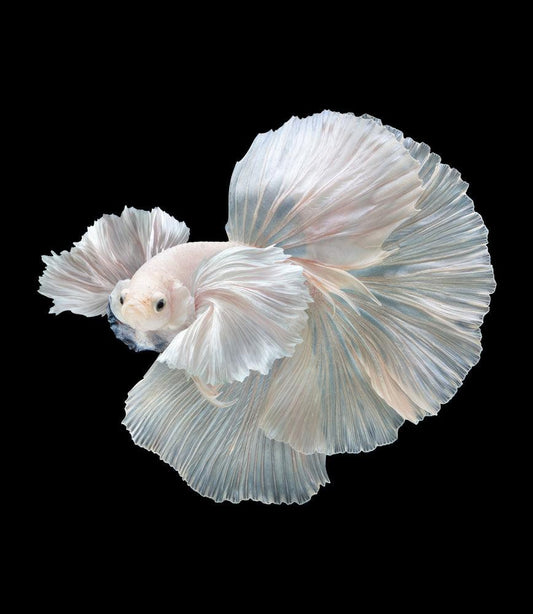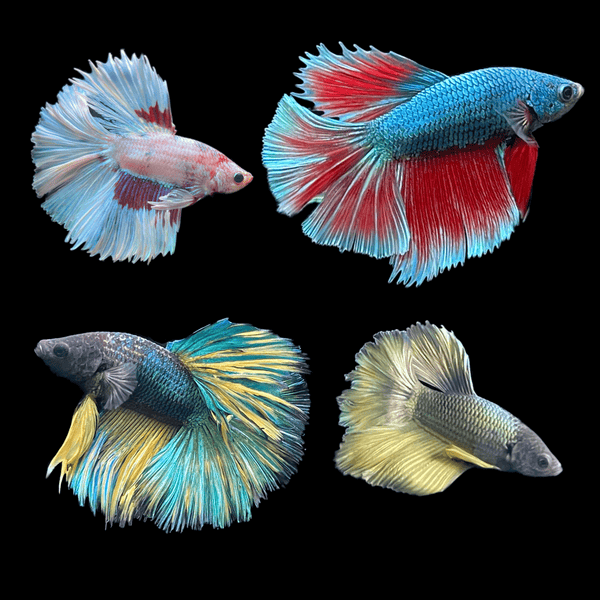Understanding Betta Fish Behavior: What Every Proprietor Must Know
Understanding Betta Fish Behavior: What Every Proprietor Must Know
Blog Article
Breeding Betta Fish: a Comprehensive Step-By-Step Overview to Efficiently Raising Infant Bettas From Eggs to Their Adult Years
Breeding Betta fish is a precise undertaking that requires cautious planning and execution to ensure the effective development of fry from eggs to develop fish. Choosing genetically diverse breeding sets with desirable features is just the start; producing an ideal environment and understanding the intricacies of the breeding procedure are just as critical. As the male Betta diligently constructs a bubble nest and guards the valuable eggs, the succeeding phases of treatment and shift demand focus to information and understanding of ideal techniques. Just how does one navigate the difficult yet satisfying path of nurturing these vibrant creatures to the adult years?

Picking Breeding Pairs
When embarking on the trip of breeding Betta fish, selecting the best breeding pairs is important to accomplishing preferable traits and a healthy family tree - betta fish. The initial action in this procedure is to determine the particular characteristics you desire to enhance or preserve, such as shade, fin kind, and body form. It is necessary to pick genetically diverse sets to prevent inbreeding, which can lead to health issues and unfavorable attributes
Assess possible reproducing prospects very carefully. A healthy male Betta needs to display lively shades, an active disposition, and well-formed fins, while the lady needs to also display vivid pigmentation and a rounded belly, indicating readiness for spawning. Observing the character of both fish is vital, as hostile or overly timid people may not reproduce efficiently.
Paperwork of family tree is similarly crucial. Maintaining documents of the moms and dad fish's origins can aid you track hereditary attributes and prospective concerns. Furthermore, seek advice from credible breeders or online sources for assistance on selecting suitable pairs. Eventually, spending time in the option procedure will considerably boost the probability of generating strong, vibrant children that satisfy your breeding goals (betta fish).

Preparing the Breeding Container
Producing an optimal reproduction atmosphere is an essential step after choosing ideal sets for Betta fish. The reproduction tank should be particularly made to supply comfort and promote the natural reproduction behaviors of the fish. Beginning with a storage tank dimension of at the very least 10 gallons to make sure sufficient room for both the man and female Bettas.
Keep a gentle purification system to keep the water tidy while avoiding solid currents that can worry the fish. In addition, an air stone can be included to offer oxygenation without interfering with the water surface excessive.
Temperature level regulation is essential; purpose for a steady array of 78-82 ° F(25-28 ° C) using a dependable heating system. The pH degree ought to be maintained in between 6.5 and 7.5, and routine water modifications are needed to ensure high water top quality.
Integrate floating plants or spawning sponges to develop hiding areas for the woman, while also motivating bubble nest structure by the man - betta fish. Finally, make sure the container is devoid of sharp designs and any possible threats, as the welfare of the fish ought to always be focused on throughout this crucial phase of reproduction.
The Reproduction Refine
Typically, the breeding process for Betta fish includes a collection of distinctive and visible actions that show preparedness for reproduction. The male Betta begins by building a bubble nest at the water's surface, which functions as a website for the fed eggs. This nest is crucial, as it provides a safe environment for the eggs until they hatch.
When the nest is established, the male will present courtship websites habits, such as flaring his fins and displaying dynamic colors to attract the lady. The lady, upon noticing the male's readiness, will respond by displaying upright red stripes along her body, indicating her receptiveness.
The fertilized eggs after that fall to the bubble nest, where the male carefully accumulates and returns them to the nest. Following this, the male assumes duty for guarding the nest and ensuring the safety and security of the eggs up until they hatch out, typically within 24-36 hours.
Taking Care Of Betta Fry
Taking care of Betta fry calls for mindful attention to their setting and nourishment to make certain healthy and balanced development and growth. After hatching, Betta fry are extremely little and at risk, necessitating a steady and clean environment. Maintaining a water temperature between 78 ° F and 80 ° F is essential, as Betta fry prosper in warm conditions. Additionally, make sure that the water is without dangerous toxins; routine water changes of 10-20% are recommended to keep optimum water high quality.
Feeding Betta fry is here equally crucial. Feed them little quantities several times a day, being mindful not to overfeed, which can lead to water top quality concerns.
Transitioning to Grownup Bettas
As Betta fry fully grown, transitioning them to adult Bettas is an essential phase that needs careful management of their setting and social interactions. This procedure normally starts when the fry reach around six weeks of age, at which point they can be gradually presented to a more structured living setting.
To facilitate this transition, it is important try this website to guarantee that the water criteria-- such as temperature level, pH, and ammonia levels-- are optimum and stable. Grown-up Betta fish grow in warm water (around 78-80 ° F) with a pH of 6.5 to 7.5. Slowly adapt the fry to these conditions to reduce anxiety.
Social interactions are another crucial aspect; male Bettas are infamously territorial and aggressive. It is recommended to different men right into specific tanks as they develop. Women Bettas can be housed with each other, but care needs to be required to check for indications of aggressiveness.
Additionally, dietary modifications should be made as the fry expand. Include premium pellets and live foods to support their development and health. By taking care of these variables successfully, you can promote a successful shift to adulthood for your Betta fish.

Conclusion
Effective reproduction of Betta fish needs mindful interest to detail throughout the entire process, from selecting genetically varied pairs to giving optimum take care of fry. By ensuring ideal reproduction conditions and preserving water high quality, the chance of healthy offspring enhances significantly. In addition, a well balanced diet and progressive adaptation to grown-up settings are critical for the development and advancement of Betta fish. Adhering to these actions carefully promotes a prospering population of Betta fish, boosting both their health and wellness and vitality.
Report this page